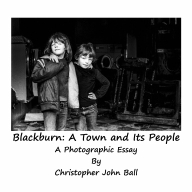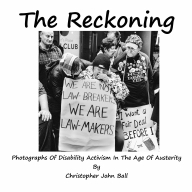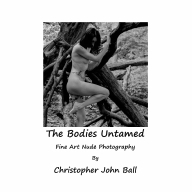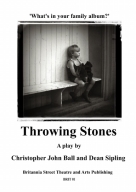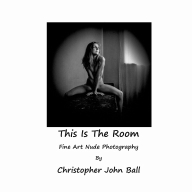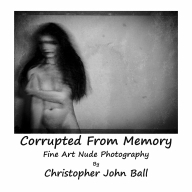
Flagrante Delicto by Will Santillo.
Published by Rosalbino Press. 2008. ISBN 978-0981740409

Tweet
William Santillo was born in New York, holds both Canadian and US citizenship, lives in Toronto, Canada and spends his time working between Canada and the USA. He graduated from the respected M.I.T. School of Architecture and it was whilst at M.I.T. that he had the opportunity to study photography under influential photographer, and founder of the prestigious publication ‘Aperture Press’, Minor White. Santillo later completed a post-graduate architectural course at the University of Toronto, Canada but he increasingly found "the camera's call stronger than the drawing boards".
A project that began in 2003, and published late last year, ‘Flagrante Delicto’ - translated from the Latin as 'caught in the act' - is the first volume in Santillo's proposed 'Risqué' trilogy. The artist's stated aim being to “rise above the disembodied explicit images commonly associated with erotica by creating images capable of possessing a longevity to arouse both the mind and body.”
‘Flagrante Delicto’ opens with a 2 page preface entitled ‘Artist’s Notes’ in which Santillo sets out his reasoning behind this particular
body of work. For 25 years he pursued a career within architectural design and commercial photography, having been exhibited in Berlin, Paris and New York, but it was, he states, the infamous events of September 11th 2001 that caused him to rethink and re-evaluate the direction of his work. He states that “two revelations immediately entered my mind” - the first being “the vulnerable nature of human existence…each day should be approached with the awareness and urgency of the knowledge that it could be your last” and the second that it seemed imperative to him that artists should make an effort to “counteract the raw energy of hatred and destruction unmasked on that and subsequent days”. He wanted to project an “affirmation of life which is manifested through the creative energies of art and passion.” To be honest I am always a bit cynical of artist’s statements and, as a practicing artist, I do my best to refrain from making them. I have read few that added anything to a work, often they serve to distract from it and many are simply pretentious. I wouldn’t call this the worst example by any means, indeed it is very informative; but placing a direct connection to this body of work and events such as 9/11 I do find tenuous at best. Where Santillo is on much firmer ground, particularly with this monograph, is the challenge he sets himself: “would it be possible to create photographs that were both sexually explicit, yet equally artistic and erotically provocative?”

When it came to selecting the models Santillo set down two basic rules – “that the people involved in the scene would know each other before the particular photo-session” and that “all the participants would be enthusiastic volunteers, rather than paid models.” This last ‘rule’ was important to him as he felt the hire of professional models would be less natural and result in a performance rather than an “unscripted opportunity for genuine emotional and physical fulfillment… …to manifest authentic instances of connection.” He also states that the images were neither rehearsed or directed and are therefore “pure documentary photography” - an interesting take on reportage, certainly taking it out of its comfort zone and indeed many images, within this monograph, could be argued to have fallen into the category that Henri Cartier-Bresson would have called "the decisive moment." Though it might be argued by some that the work might carry a little bit more weight, in the genre of reportage, if some of the subjects before the lens had been a little less than the perfect examples of the human form on display here, but that is a small gripe.
The final images were “converted to a unique tri-toned black and white reminiscent of a traditional sepia tinting” but no other digital manipulation took place – all visual
effects being “captured in camera.” Many of the images exhibit subject motion blur, vignetting and/or differential focusing, similar to that produced by the use of a Holga or Diana toy camera, and this lends greatly to the spontaneous dynamism of the work on display. The sexual acts before his lens are varied and include heterosexual, bisexual, homosexual couples, threesomes and foursomes. One is allowed to see and think beyond the subjects themselves - the images are both the fetish and the sensual object. The passion inherent within these images communicates from the page to resound within the viewer. It is testament to Santillo's abilities as an artist, and the trust he shares with his subjects, that he so effortlessly creates a doorway through which each image becomes both erotic and sensual to the viewer – whatever their sexual orientation; an achievement of some note that alone is worthy of our applause.
The images are, with but a few exceptions, displayed one per page leaving plenty of space for each image to breath. ‘Flagrante Delicto’ is a limited edition, heavy weight, hard backed, quality monograph, of only a thousand copies, produced and designed by Santillo and within its 156 pages are 125, beautifully reproduced, tri-toned photographs with a few colour images thrown into the mix. To return to the challenge Santillo set himself: has he created a set of photographs that are both sexually explicit, yet equally artistic and erotically provocative? To be honest; a small selection of the images don't quite make it out of the standard fare, they lack a little something that would set them apart and would have been best edited out, but, on the whole, Santillo has achieved what he set out to do and should be congratulated.
Santillo believes that the best erotic photography “speaks to our primal instincts. It feeds the soul and allows us, for a brief moment, to touch with abandon our essence.” I share this view and believe that erotic art is finally and confidently starting to come out of the shadows to take its rightful place as a serious subject worthy of intellectual artistic study and ‘Flagrante Delicto’ is helping towards this goal. I look forward to future volumes within this trilogy.
Review by Christopher John Ball
*****Rating
*Review Star Ratings If you have a photography related book you would like reviewing, including self-published material, email details to chris@cjballphotography.co.uk and I will happily consider doing so. The review will be hosted, free of charge, on this website and posted via Twitter and Facebook. All I ask in return is that a link be placed on your own site to the review on this website and, if used in any promotional material , I am credited as Christopher John Ball.
July 2024 Several books, featuring Christopher John Ball's photographs, are now available through Amazon or click on an image below to purchase via secure payments on lulu.com

Tweet


